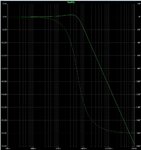signalflow
Newbie level 5

- Joined
- Nov 15, 2013
- Messages
- 9
- Helped
- 0
- Reputation
- 0
- Reaction score
- 0
- Trophy points
- 1
- Activity points
- 118
 Hi, I am using a microcontroller to drive some relays that drive contactors. My board is powered by the 208Vac through transformer then through bridge then to LM2596 simple switcher which gives a 5.0V output. Then that 5.0V is sent through a LM3940 to generate 3.3V output needed for other chips. There is another contactor that is controlled by just a physical switch.
Hi, I am using a microcontroller to drive some relays that drive contactors. My board is powered by the 208Vac through transformer then through bridge then to LM2596 simple switcher which gives a 5.0V output. Then that 5.0V is sent through a LM3940 to generate 3.3V output needed for other chips. There is another contactor that is controlled by just a physical switch.When I turn on the contactor (via the manual switch), noise comes back through the AC lines/transformer/bridge, etc. and resets my board (very often). The contactor isn't currently powering anything, so I'm just manually energizing the contactor coil.
I have a quencharc (snubber) on the contactor.
I also drive a relay that turns on an AC motor (fan). If I turn the fan on via the relay, then this will reset my board very often.
The only filtering I have on the board is a common-mode choke before the bridge rectifier. I do have 0.1uF bypass caps on every chip.
Can anyone suggest what the best or most common method to filter out this noise would be? I tried adding a low-pass filter just after the transformer (just before the common mode choke and bridge rectifier) but my electrolytic caps smoked very fast. It was an LC filter with a 100uF series inductor with a 6.8uF shunt capacitor. So not sure why my cap smoked either (maybe because they were electrolytic). Should I move the LC filter to after the bridge rectifier?
Thanks for help!
Last edited:



